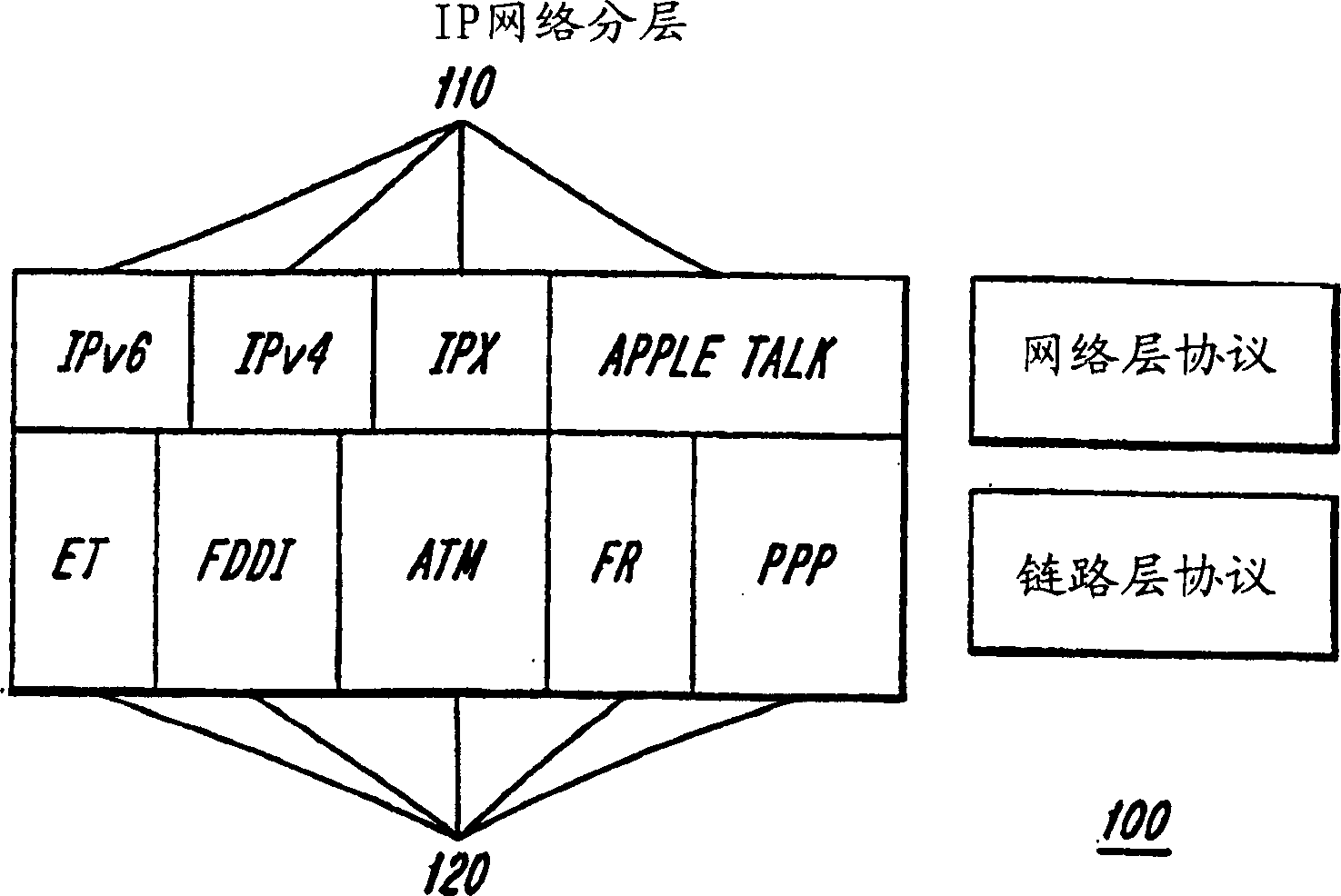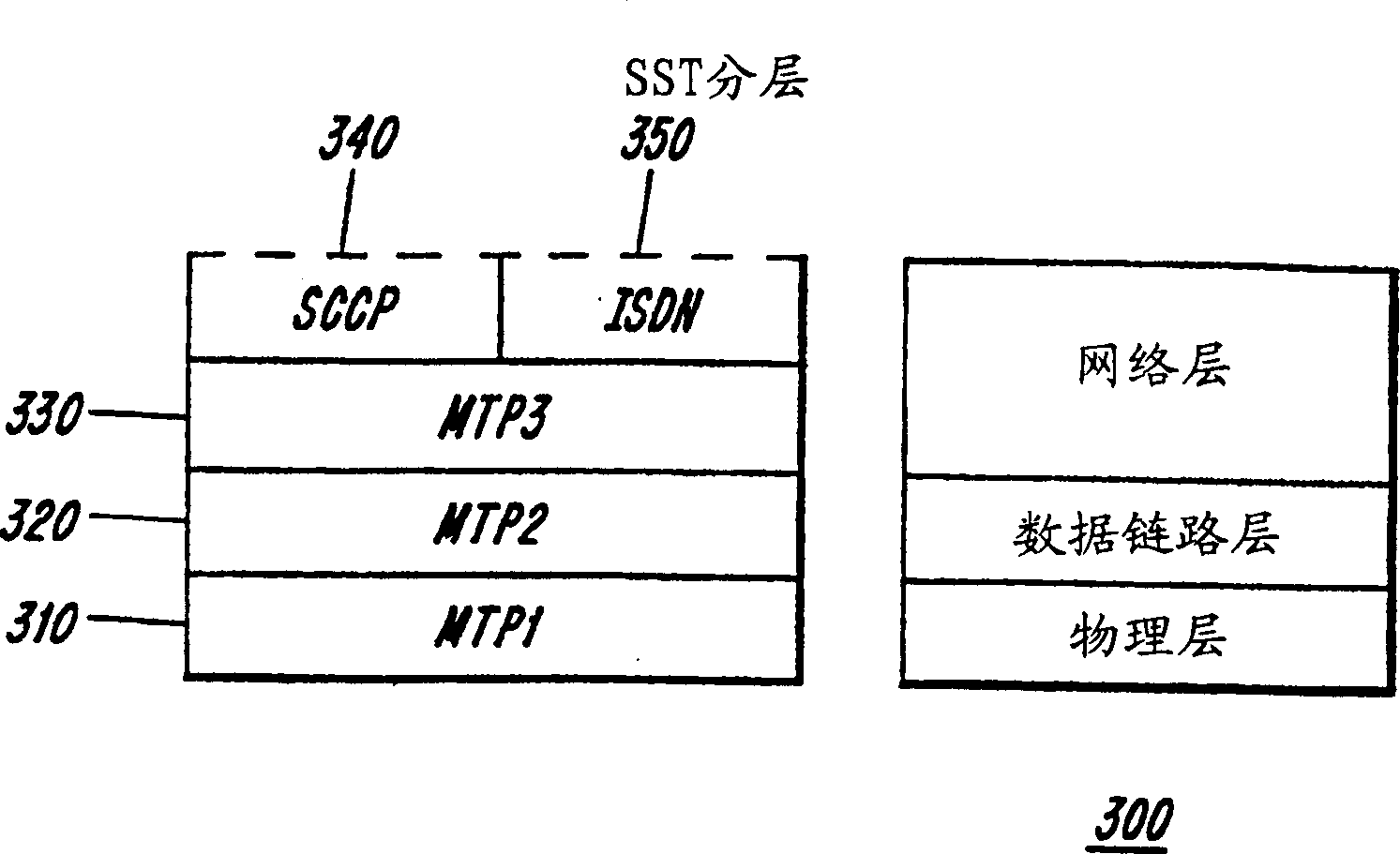Integrating signaling system number 7 (SS7) networks with networks using multi-protocol label switching (MPLS)
A multi-protocol marking and signaling system technology, applied in the field of packet switching communication network, can solve the problems of inability to ensure high performance and low efficiency
- Summary
- Abstract
- Description
- Claims
- Application Information
AI Technical Summary
Problems solved by technology
Method used
Image
Examples
Embodiment Construction
[0032] To illustrate certain aspects of the invention, a brief description of conventional MPLS and SS7 networks is provided immediately below. A more detailed description of MPLS can be found, for example, in April 1999 Internet Engineering Task Force (IETF) Network Working Group, Multiprotocol Label Switching Architecture (Multiprotocol Label Switching Architecture) by E. Rosen et al., Internet draft draft-ietf-mpls Found in -arch-05.txt, all merged here for reference. A more detailed description of SS7 can be found, for example, in 1992 American National Standards Institute (ANSI) Standard T1.110-1992, Signaling System Number 7 - General Information (Signaling System Number 7 - General Information), also incorporated here in its entirety for reference.
[0033] In general, label switching can be decomposed into a forwarding component and a control component. In the forwarding component, the next-hop selection made by a Label Switching Router (LSR) for an incoming packet i...
PUM
 Login to View More
Login to View More Abstract
Description
Claims
Application Information
 Login to View More
Login to View More - R&D
- Intellectual Property
- Life Sciences
- Materials
- Tech Scout
- Unparalleled Data Quality
- Higher Quality Content
- 60% Fewer Hallucinations
Browse by: Latest US Patents, China's latest patents, Technical Efficacy Thesaurus, Application Domain, Technology Topic, Popular Technical Reports.
© 2025 PatSnap. All rights reserved.Legal|Privacy policy|Modern Slavery Act Transparency Statement|Sitemap|About US| Contact US: help@patsnap.com



